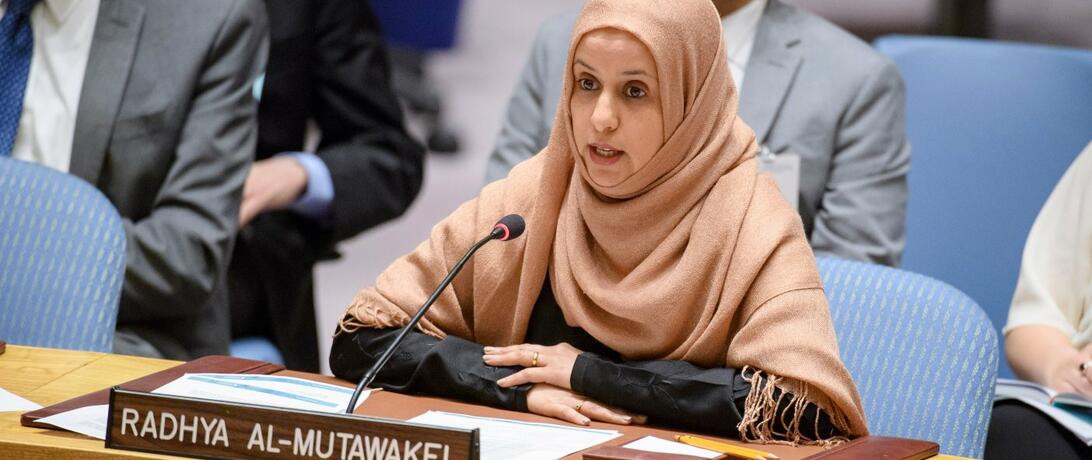
While the war in Yemen continues, Yemeni women are critically involved in bringing peace to the fragile state, an example of Women, Peace and Security work in action.
If you’ve been following the ongoing war in Yemen, you’ll already know that at the beginning of this month, Saudi Arabia shut down Yemeni land, air, and sea borders in retaliation for the firing of a missile aimed at an international airport near Riyadh. If you’re an expert on Women, Peace and Security or are interested in human rights in general, you’ll also likely know that, as with so many other violent conflicts, it’s civilians—not just combatants—who pay the ultimate price for this kind of action.
According to a factsheet from the Council on Foreign Relations, the war has killed more than 10,000 Yemenis, with an estimated 17 million people living with food insecurity, and 2.9 million displaced. Thankfully, the Saudi mission to the United Nations announced on Monday that they will lift the blockade, with the promise of UN monitoring to prevent the smuggling of weapons, ammunitions, and missiles. For some, this small step will help ease the immediate threat of danger. But it certainly does not bring the country any closer to lasting peace.
The International Civil Society Action Network (ICAN) and the U.S. Civil Society Working Group on Women, Peace and Security, Our Secure Future’s partner organizations, published a policy brief in August of this year addressing the significant role women can and do play in sustaining and supporting existing conflict zones, reaching political and diplomatic agreements, and in implementing them after they are reached. It goes without saying that the value of women and their work applies in the Yemeni context, as well as others.
Taken from the policy brief, here are three things you should know about the work Yemeni women are already doing, and how they can help bring peace to this fragile state:
1: Women played an active and vital role in the pre-war National Dialogue Conference (NDC).
Held from March 2013 to January 2014, women made up 28% of participants, led three of nine NDC working groups, were 9% of the judges on the Order and Standards Committee, and were 25% of the Consensus Committee. Specifically because of their presence and tireless advocacy, women were able to influence the content of the new constitution, securing an astonishing 30% quota for women in Parliament.
2: As a result of the war, women’s roles in society have changed.
Since many men have lost their lives in battle, “[f]emale-headed households have increased from 9% to 30%, with women heads facing greater difficulties accessing aid and other resources needed to care for their families.” This shift has imposed greater economic burdens on women, as well as raising a host of other problems. As more women take on the traditionally male role of breadwinner, gender tensions have increased even within families, sometimes resulting in domestic and gender-based violence.
3: Even in war, women haven’t stopped organizing for peace.
In spite of the fragile state in which Yemen remains, women have had some successes in lobbying for their place at the negotiating table—including with the formation of the Yemeni Women Pact for Peace and Security. As a result of their efforts, seven members of the Pact gained an invitation to peace talks in Kuwait in May 2016. Women also developed a National Agenda for Women, Peace and Security, which they shared with relevant stakeholders in order to push for a sustainable solution.
In spite of all their efforts, (not to mention their relative progress, given the impossibility of the situation they have been faced with), “women continue to be ignored and excluded from formal peace and transition processes.” The international community could, and should be doing much more, not just because it’s the “right” thing to do, but because including women makes efforts to achieve and sustain peace much more likely.
For more information on women’s work for peace in Yemen, including suggestions for U.S. policymakers, read the full brief, Bringing Peace to Yemen by Having Women at the Table: What The U.S. Must Do and Why It Matters.
Article Details
Published
Written by
Topic
Program
Content Type
Opinion & Insights